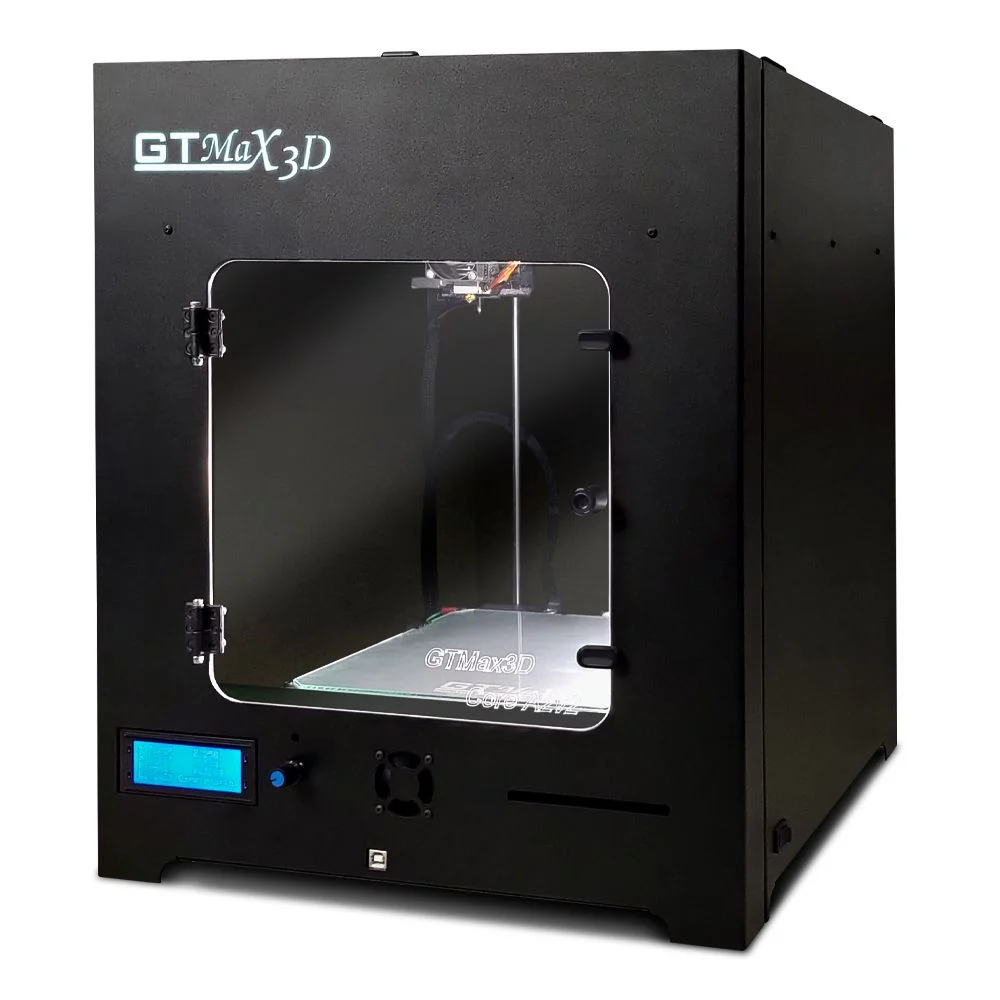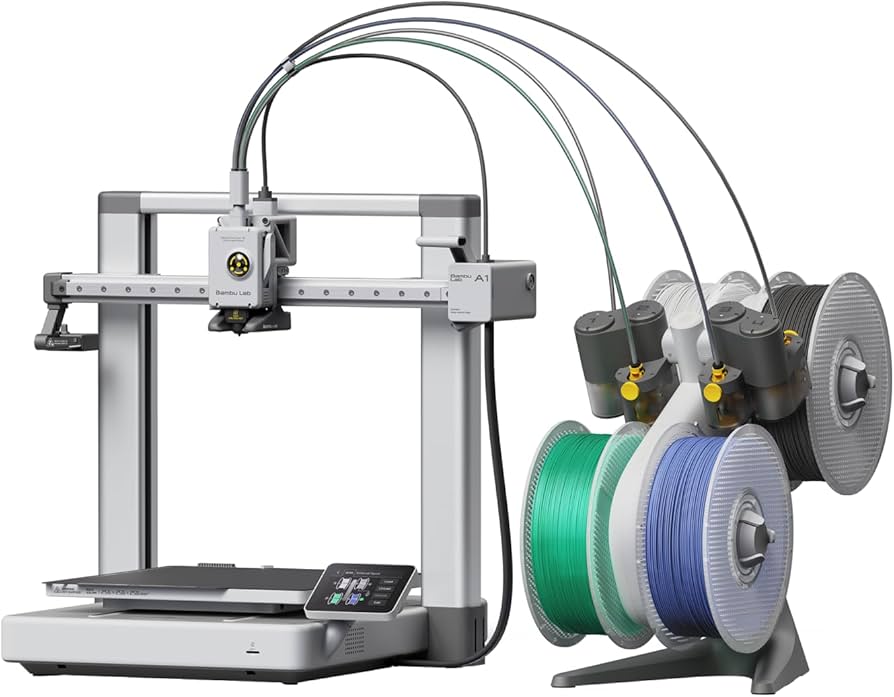Compare Core A2V2 vs A1
Comparison between the best 3D printers
Choose the best 3D printer at the best price. The cheapest 3D printers are here.
Buy a 3D printer here with 3D Fila.
 |
 |
|
| Model | Core A2V2 |
A1[BUY A1] |
| Printing Material | Filament | Filament |
| Buy Filament for GTMax Core A2V2 | Buy Filament forBambu Lab A1 | |
| Estimated price | $684,00 | $700,00 |
| Manufacturer | GTMax | Bambu Lab |
| Release Year | 2019 | 2023 |
| Print Volume [mm] | 220x220x240 | 256x256x256 |
| Printer Size [mm] | 425x460x512 | 385x410x430 |
| Weight [kg] | 8,3 | |
| Power Loss Recovery | YES | YES |
| Enclosed printer | YES | NO |
| Bed Leveling | Automatic | |
| Filament End Sensor | YES | YES |
| Bed type | Heated | Heated |
| Power supply system | Bowden | Direct Drive |
| Standard nozzle | 0,4 | 0,4 |
| Maximum Nozzle Temperature [°C] | 295 | 300 |
| Maximum Bed Temperature [°C] | 135 | 100 |
| Maximum printing speed [mm/s] | 150 | 500 |
| Filament holder | YES | YES |
| Camera for supervision | NO | NO |
| Recommended filaments | PLA, PETG, Tritan, Flex, ABS | PLA, PETG, TPU, PVA |
| Recommended slicers | Cura, Simplify, Slic3r, IdeaMaker | SuperSlicer, PrusaSlicer, Cura, OrcaSlicer |
| Maximum Resolution [mm] | 0,05 | 0,1 |
| Processor | ||
| Display | Mono | Touchscreen 3,5 |
| Power Supply | 350 W | |
| Connectivity | SD / USB | Wi-Fi, Bambu-Bus, Cartão Micro SD |
| Operating systems | Windows, Mac, Linux | Windows, Linux, Macbook |
| Date of registration in the system | 2022-11-12 | 2024-07-17 |
| Release date | 2019 | 2023 |
| Extra features | The GTMax3D ProCore A2v2 is a compact and robust 3D printer with a printing area of ??220 x 220 x 240 mm. It offers high print quality, ranging from 0.05 mm to 0.32 mm. Its features include automatic filament detection and changing, travel speed of up to 300 mm/s, and a heated aluminum bed with a glass top. It has automatic bed leveling with 16 points and an all-metal hotend that reaches up to 298°C. The printer has a carbon steel frame with electrostatic painting, is automatic bivolt and has connectivity via USB and SD card. The Bowden system and core xy kinematics complete its advanced features. | The BambuLab A1 printer features fully automatic calibration, multi-color printing with the AMS system, active flow rate compensation, quick nozzle change with a clip, active motor noise cancellation, a build volume of 256x256x256 mm³, a maximum extruder temperature of 300°C, and a heated bed of up to 100°C. In addition, it has high precision, a machine health management system and an intuitive 3.5-inch touchscreen interface. |
| Support for multiple colors and materials (AMS and CFS) | NO | YES |
Notes * |
||
| Cost-benefit | 6 / 10 | 7 / 10 |
| Hardware | 2.5 / 10 | 4.2 / 10 |
| Tela | . | . |
| Print volume | 3 / 10 | 4 / 10 |
| Performance | 1 / 10 | 4 / 10 |
| [BUY A1] |
Conclusion |
| In concluding the comparison between the Core A2V2 and the Bambu Lab A1, several factors highlight the strengths and weaknesses of each printer. While the Core A2V2 is built on an established design released in 2019, it offers commendable print quality and essential features like automatic bed leveling and a sturdy enclosure. Its relatively lower price point makes it an attractive option for those seeking a reliable entry into 3D printing without breaking the bank. However, its limitations in print volume and slower maximum printing speed may deter users looking for versatility and efficiency. In contrast, the Bambu Lab A1, although priced slightly higher, incorporates modern technology and features. The larger print volume, rapid printing speeds, and advanced capabilities, such as multi-color printing and active flow rate compensation, position it as a more future-proof choice. The inclusion of a user-friendly touchscreen interface and better performance metrics further enhances its market appeal. Overall, if budget constraints are a primary consideration, the Core A2V2 presents a solid option, particularly for beginners. However, users willing to invest a bit more for greater functionality and versatility will find the Bambu Lab A1 to be the superior choice, especially for more advanced projects. |

